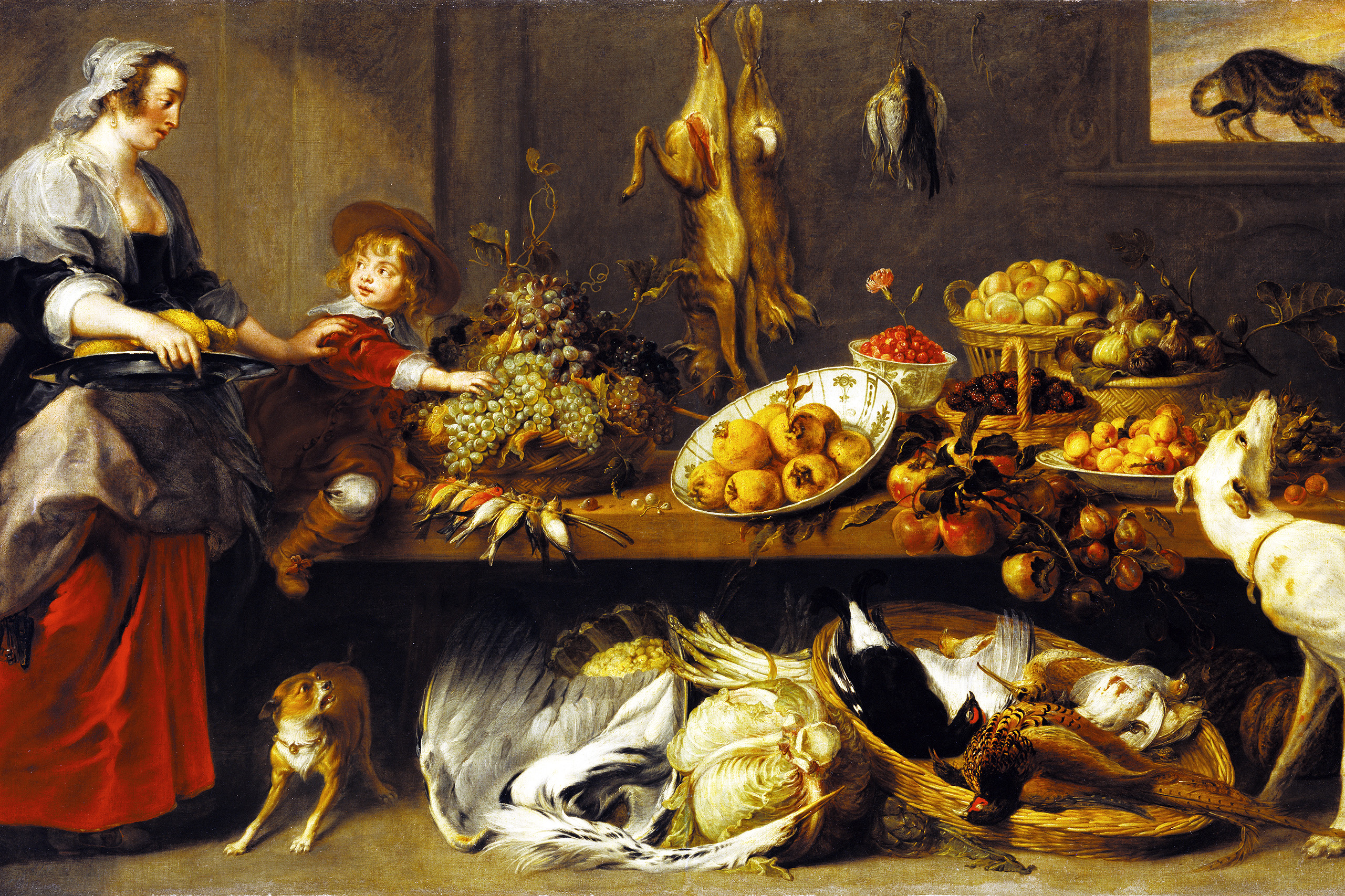Anthropologists, archaeologists and historians embarked on “Food Studies” long before the discipline arrived in universities — and long before the twentieth century fostered an almost obsessive interest in food origins, recipes and exotic cuisines in the wider population. Culinary journalism and recipe books now frequently include evocative stories of the makeup of meals and the origins of ingredients, along with techniques for creating something approximating the accompanying carefully curated photographs.
Historian Benjamin Wurgaft and anthropologist Merry White’s Ways of Eating: Exploring Food through History and Culture features no images produced by a food stylist; nor does it include instructions about how to make any dish. Instead, the authors interweave stories and analyses of food — its production, its preparation and the meanings people attach to eating — to provide a fascinating cultural and historical overview.
People hunted and gathered food for thousands of years before they developed systems of agricultural subsistence. Wurgaft and White concentrate on how food was produced after agriculture’s arrival, noting the debates that rage in archaeology about its origins. Did people invent cultivation, drawing on observations of the reproductive cycles of animals and plants? Or did climatic change foster the conditions for sedentary settlements that required more intense food production?
Technological changes, migration and population pressure all contributed, and it is probably impossible to isolate any specific causal chain. But whatever the essential conditions were, the results were transformative — of landscapes, ecologies, work, crops, foods and ways of eating.
Wurgaft and White begin by exploring how the domestication of plants and animals spread across world. Drawing on James Scott’s historical analysis of state formation, they dismiss the notion of simple linear progress from nomadic barbarism to settled civilisation. Pastoral nomadism and sedentary farming coexisted for millennia. But they note that farming does appear to “encourage a particular style of cooperative work and social life” and that the material qualities of grain — it can be stored, transported and exchanged for other goods — “aided the rise of the state.” Wheat, rice and corn fed courts, armies and bureaucrats.
The relationship between imperialism and agriculture is complex and the authors succinctly summarise debates about their interaction. Roman and Persian empires, for instance, were built on the wheat that flourished in the regions they originally occupied. The Han Chinese empire was based on rice, and — as the authors write — “no other civilisation, until the rise of industrial agriculture in modernity, reached the same heights of agricultural productivity.” Deforestation, terracing and irrigation, nitrogenous fertilising and soil modification enabled intensification on a grand scale.
All along, productivity and population growth were interacting with changes in agricultural practices and cooking techniques. Deforestation, for example, meant that food preparation had to be quick in order to use a minimum amount of fuel; hence, the invention of the wok and a cuisine using small, thinly sliced meat and vegetables.
As Wurgaft and White observe, we know much more about the dining habits of the wealthy than we do of the poor. The feasts of Roman emperors, medieval courts and aristocratic households were far more likely to be documented than the everyday meals of peasants. Moreover, they were more varied and abundant. Descriptions of patrician feasts, from the Romans to the British Edwardians, reveal an astonishing range of meats, imported fruits and beverages. Patterns of consumption have always reflected economic and social status, with bread and cakes made from fine, white flour exclusively for the rich, and coarse grains providing bread and porridges for the majority. When famines strike, the poor starve.
The history of changing food and eating habits is the history of the movement of people, plants and animals across continents and between nations. During the Middle Ages, people from northern Europe encountered new foods as they waged wars and made pilgrimages. Conquerors brought back new ingredients and slaves who knew how to prepare them; pilgrims returned with a taste for “foreign” dishes and drinks. The use of rare and exotic ingredients, then as now, was indicative of wealth, social status and worldly sophistication. Spices, imported from China, India and the Middle East, were used not only to preserve food but also to display social status and cultural capital.
But the most dramatic transformation of European and Asian cuisines occurred during the “Columbian exchange” that followed the conquest and colonisation of the Americas. Historian Alfred Crosby, who coined the term in his 1972 book on the subject, revealed the complexity and extent of transatlantic exchange and the magnitude of its impact across the globe. Wurgaft and White endorse his view that this constituted a “tectonic shift” in agriculture, staple foods, national cuisines and eating habits.
Plants and foodstuffs now associated with Mediterranean cuisines, such as tomatoes, capsicums and corn, were initially treated with suspicion. Potatoes — disparaged as suitable only for peasants and their animals — were embraced by the bourgeoisie after cooks discovered their delicious flavour when combined with cream and butter. It is difficult to think of Italian food without tomatoes and astonishing to imagine the foods of Korea, India and other Asian countries without chillies.
People and plants flowed in both directions. Sugar, originally from India, was an established crop but a luxury foodstuff in Spain by the sixteenth century. Until the eighteenth century, honey remained the main culinary sweetener for rich and poor throughout Europe; then, with colonisation and the exploitation of African slave labour, sugarcane plantations flourished in the Caribbean.
English sweet puddings, German cakes, Belgian chocolate and French patisserie, all relatively recent inventions, evolved in the context of the Atlantic slave trade. Rice varieties from West Africa were introduced to feed slaves in the Caribbean and Central America, and were only gradually replaced by Asian varieties a century later. Peanuts arrived in Northern Africa from Peru and Bolivia, and were incorporated into many regional African cuisines. Creole cuisines in the southern states of America were dominated by rice and Old World vegetables, especially okra.
Ways of Eating, a broadbrush history written for a general readership, is full of fascinating stories. Vignettes interspersed between chapters describe specific food producers, foodstuffs, culinary techniques and cultural ideas about food. White, recounting a visit to a coffee plantation in Panama where the highly prized gesha beans are produced, compares her tour to a hajj, not only a signal of “a coffee person’s seriousness of intent” but also a means of gaining esoteric knowledge and status in the world of coffee connoisseurs. Gesha coffee’s apparently unique flavour ranges “from a tea-like smokiness to something like grapefruit peel.”
Novelty, rarity and heritage varieties continue to lure the gourmet and the chef. Pepper and cinnamon, once rare commodities, are now so common as to be mundane. Even so, spice’s exotic appeal persists, and for the discerning consumer Tellicherry pepper from Malabar or Kampot pepper from Cambodia are more prestigious than common black pepper, their use in a recipe lending cachet to dish and chef.
The emphasis on authenticity or the exact replication of a dish from a region or a restaurant menu is a recent phenomenon. White suggests that those who denigrate dishes that don’t match some culinary Platonic ideal make “a fetish of the social and environmental conditions that make an ingredient or dish possible.” Food has fashions and recipes have always depended on the availability of ingredients as well as the skill and imagination of cooks.
In fact, all “national” cuisines have adopted novel foreign ingredients and adapted recipes to local tastes. Japanese Hawaiians invented Spam sushi. After Senegalese soldiers in the French colonial army developed a taste for nem, sold as street food in Hanoi, some returned home with Vietnamese wives whose adaptations of the recipes using local ingredients naturalised these fried rolls. Senegalese nem are different from the Vietnamese originals — but they are not ersatz, just distinctive. The same can be said of Japanese croissants or Australian gelato. White and Wurgaft are clearly connoisseurs of food, but their book challenges ideas about refined taste, authenticity and tradition.
Colonisation, commoditisation, industrialisation and globalisation have transformed diets at an unprecedented rate. Rare and exotic ingredients that were formerly delicacies for the wealthy can now be found on supermarket shelves. Food has always provided ways of expressing cultural identity, regional differences, degrees of sophistication and economic status. Wurgaft and White trace these processes over centuries and across the globe. Their conclusions are both celebratory and thought-provoking.
Agriculture has brought humans extraordinary benefits, but it has also resulted in disastrous depletion of soils and environmental devastation. Many foods arrive in our homes with a heavy carbon footprint. The most common foods touted as “fair trade” are coffee, bananas, tea and cocoa — all grown in countries where many people, including growers, continue to live in poverty. There are ironies and paradoxes in contemporary ways of eating, and the combined forces of history and anthropology are excellent ways of thinking about them. •
Ways of Eating: Exploring Food through History and Culture
By Benjamin A. Wurgaft and Merry I. White | University of California Press | $45.95 | 256 pages




